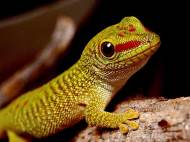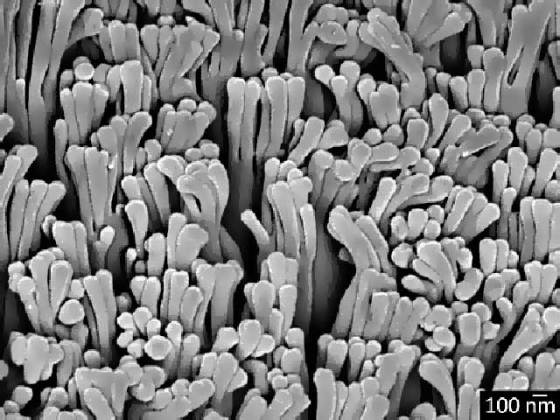Simple templating technology allows stamping of biomimetic gecko toes
 The adhesive surface of gecko’s toes has inspired many research groups to try to mimic this ability in an artificial material. Researchers at the A*STAR Institute of Materials Research and Engineering and co-workers at Nanyang Technological University in Singapore claim that they came up with the closest biomimicry yet, and that their synthetic gecko toe surface has the properties to match.
The adhesive surface of gecko’s toes has inspired many research groups to try to mimic this ability in an artificial material. Researchers at the A*STAR Institute of Materials Research and Engineering and co-workers at Nanyang Technological University in Singapore claim that they came up with the closest biomimicry yet, and that their synthetic gecko toe surface has the properties to match.
The geckos’ ability to cling to surfaces is possible due to millions of microscopic hairs that cover the surface of their toes. Each hair has a branched structure, in which each fiber breaks into multiple sub-fibers, which in turn break into hundreds of fibrils with only 100–200 nanometers in diameter. This structure ensures a high surface area, which helps the gecko to cling to the wall. Since the hairs become more flexible as they become thinner, the number of fibrils in contact with the wall is maximized.
Led by Isabel Rodríguez from the A*STAR Institute of Materials Research and Engineering, the researchers have successfully mimicked this hierarchical structure through use of an anodization technique that allows branched nanopores to be etched sheets of aluminum foil. Afterward, the foil was used to form the templates needed to create the dry adhesive surface. In order to create the final hairy polycarbonate surface, a capillary force-assisted nanoimprinting was used to stamp these templates into sheets of polycarbonate plastic.
The researchers created two separate surfaces – one with simple (unbranched) hairs and one in which the hairs branched at their tips to form nanoscopic fibrils which resemble those found on gecko toe-pads. After tests performed on both surfaces, they found that the sheer adhesion force of the branched material was 150% greater compared to the linear material.
“One of the most important findings from the study is the insight of how the fibrils can be made using a simple process”, said Rodríguez. “There have been reports of other hierarchical structures fabricated in polymers, but the fabrication methods they use are rather costly and complicated and not suitable for large scale. Our branched, porous template fabrication is straightforward and allows large areas of gecko-like structures to be fabricated at low cost.”
Although researchers who are biomimicking this feature achieve results similar to those found in nature, a while ago we suggested a read on our Twitter in which a group of researchers at the University of Akron claims that they have discovered clues of lipids left behind in gecko footprints. The presence of phospholipids found in the footprints has not been considered in current models of gecko adhesion and it could provide the missing link in understanding superhydrophobicity, self-cleaning and fluid-like adhesion and release of gecko feet.
For more information, read the article published in the ACS Nano named: “Fabrication and analysis of gecko-inspired hierarchical polymer nanosetae”.










interesting information. Nice to read this.
It is great they managed to make it simple and precise.